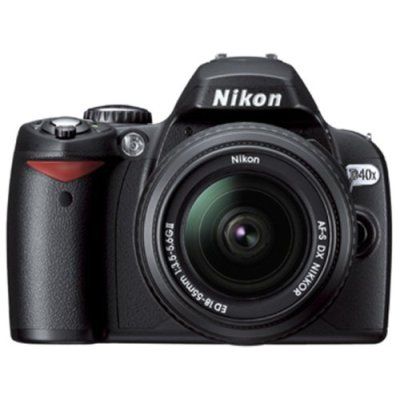Hot on the heals of the D40 (around 4 months in fact) comes the D40x a 10-megapixel update of the D40 that in all but a few areas is identical to its predecessor. As a result, this review needs to be read along with the D40 test posted a few weeks ago because of the similarity.
Our quick take
The image quality, handling, responsiveness and features strike the same great balance for its target market as on the D40 but, I for one don’t feel the extra £150 for the higher resolving sensor makes total sense for you, the buying public. Yes, it means Nikon has a camera that can go head to head with Canon’s EOS 400D, but this is more a marketing ploy than trying to bring a better product to market for the photographer.
But to be fair, just like the D40, the D40x is a slightly more expensive but still excellent DSLR for the first time DSLR buyer on a more modest budget and for those that feel they really do need the extra resolution over the D40. It’s compact and lightweight too, and ultimately an excellent choice.

Nikon D40x Digital SLR camera - 4.0 / 5
| FOR | AGAINST |
|---|---|
|
|
All key specification, the controls, the handling, the large LCD and its neat graphical user interface via the big screen are the same. Even the gross body weight (including the (same as D40) battery) is identical at 522g.
Of the four elements that have changed, the most obvious is the new APS-C sized 10-megapixel sensor; a sensor the same physical size as the D40’s 6-megapixel chip but with many more, smaller pixels crammed on. This resolution increase should provide extra detail, but a down side is it actually has implications for both noise (smaller more densely packed pixels suffer more from noise) and its removal via processing – both can degrade the images.
As the kit lens supplied is the same 18-55mm, F3.5-F5.5 AF-S Nikkor, it’s resolving power may not allow it to capture more detail either, possibly making the larger file sizes created by the extra resolution redundant. But I’m getting ahead of myself.
Another new element is related to the change in sensor too, the improved ISO range. A new lowest sensitivity setting of ISO 100 (from the D40’s ISO 200) is available after which, the sensitivity range is identical to the D40.
A third changed element on the D40x is the Auto ISO mode, which has been boosted to a range of ISO 200 (the new setting) ISO 400, ISO 800, ISO 1600 and ISO 3200 (the camera’s “Hi 1” setting) and it works over the same (as the D40’s) minimum shutter speed range: 1-second to 1/125th-second.
Last up on the changes over the D40 is the increased continuous shooting speed of 3fps from the D40’s 2.5fps. However, this drops when noise reduction processing is turned on in the camera’s excellent menu system.
Other performance factors such as start up and responsiveness are excellent, with almost instant start up and negligible shutter lag, the D40x is responsive to use. It’s handling characteristics are identical to the D40 and form a nice combination of great usability and performance, which, just like the D40 before it, make it a superb options for those looking to move from a digital compact on a more modest budget.
One possible down side is the camera has no internal focus motor, so compatible lenses are restricted to AF-S and AF-I optics, all the other types will be manual focus only and also may not be able to utilise some of the more sophisticated metering options. The rest of the camera’s key spec can be gleaned for the earlier D40 test so there’s little point repeating it here as all things considered it’s all identical.
But the key (for me) in terms of how successful this updated Nikon is revolves around the picture quality now that new sensor with an extra 4-megapixels of resolution is parked behind the lens.
Like the D40, the metering and focusing performance is excellent; colour control is good too with the usual parameters to tweak if required. Like the D40, white balance control is good too in all but indoor situations where it reveals a slight orange cast. The camera’s kit lens is one of the better such kit lenses available to “budget” DSLRs but there’s distinct blue and purple pixel fringing on high contrast areas simply not visible on similar shots taken on the D40, which indicates it struggles a little to resolve all the light onto the new, smaller pixels. Otherwise, on scenes that are more general it seems up to the job at hand.
But, as discussed in my review of the D40, I had worries over the D40x’s noise performance and closely inspecting the images shot on both cameras at all ISO’s the D40x fares slightly less well than its 6-megapixel precursor.
Worryingly, some (admittedly very slight) noise in shadows is evident in my images even at ISO 100; it is a subtle granularity most visible in the red channel when viewed in Photoshop. To be fair, noise, while present within similar areas too the D40 images, is less clumpy and so less obvious in the finished image.
Having said that the noise level is not a massive problem particularly in terms of compared to a 10-megapixel compact say, but its visibility within the image is not obvious until you get above ISO 800 and not intrusive until you’re above ISO 1600. In short, the D40x does much better than anticipated, though the noise reduction processing does slow the continuous frame rate a little if it is turned on.
To recap
We aren't convinced the extra 4 million pixels are worth another 100-quid
